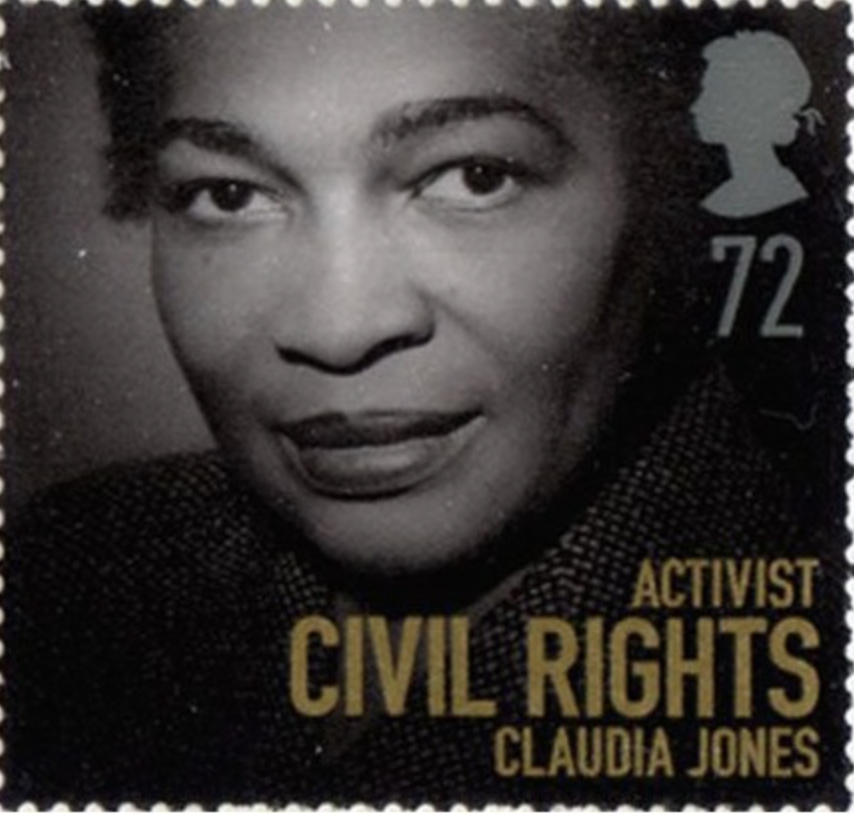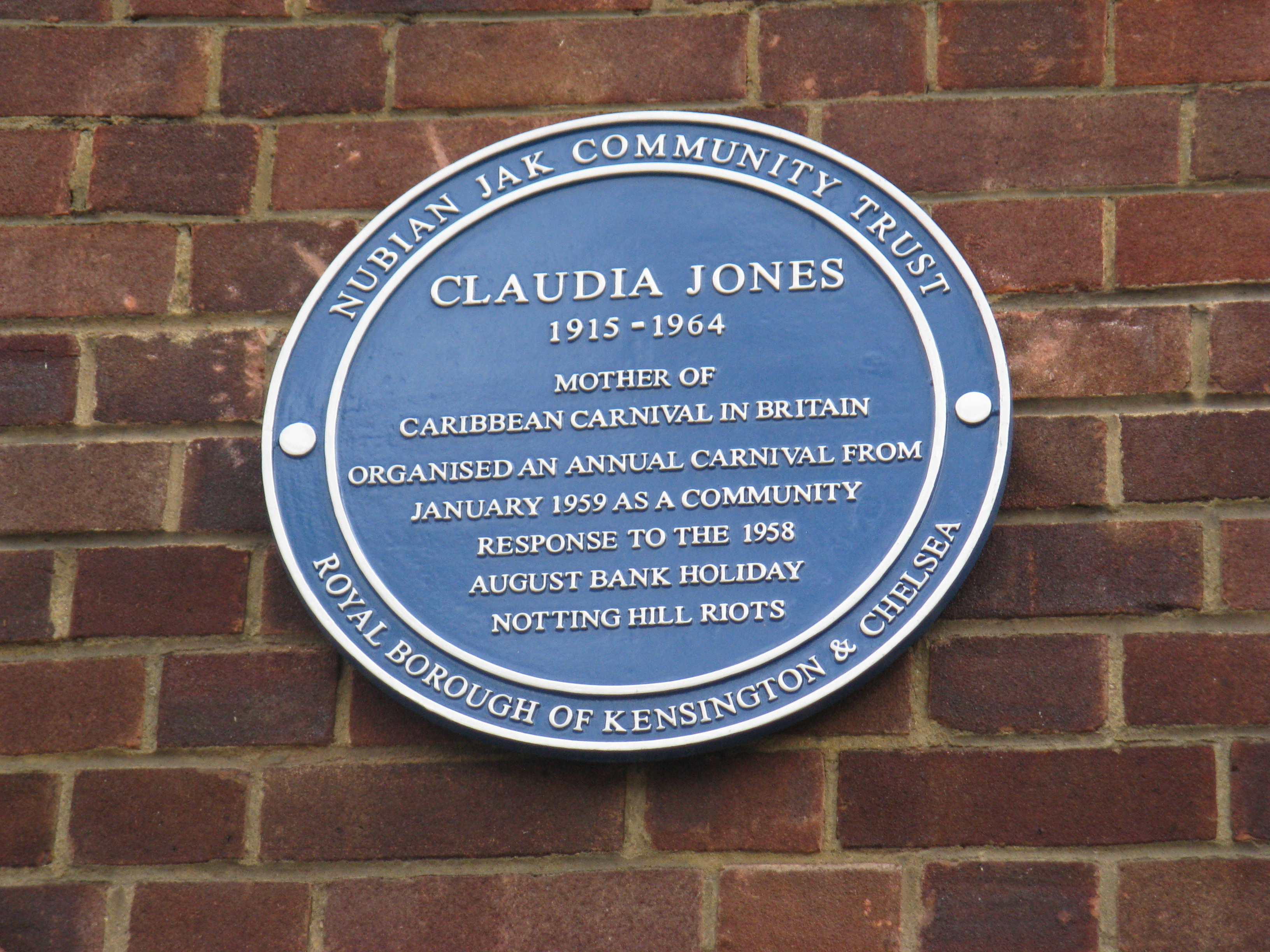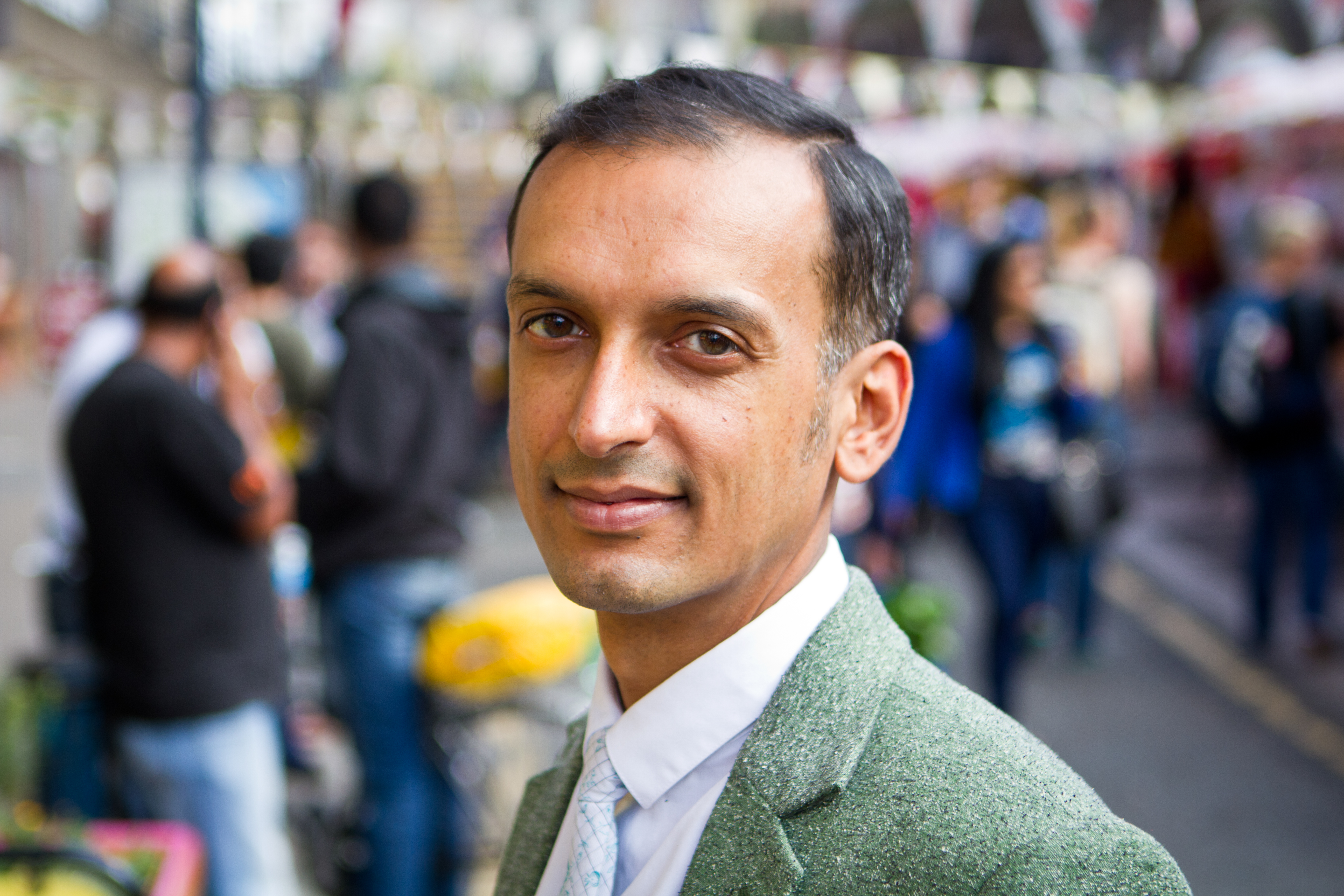Notting Hill Carnival is the largest street party in Europe, with about two million people taking to Notting Hill and Ladbroke Grove in west London for spectacular costumes, parades, music and dancing.
Here we share ten things about Claudia Jones, the formidable activist, intellectual, journalist and community organiser who was instrumental in the foundation of an event that has grown to become a powerful and electrifying symbol of anti-racism, multiculturalism, tolerance, respect, and the Windrush generation.
Pioneer of Intersectionality
Jones is one of the pioneers of intersectionality. She outlined how African American women suffered triple oppression – race, class and gender – in a 1949 thesis paper “An End to the Neglect of Problems of the Negro Woman”.
In 1955, Jones was deported from McCarthy-era America for her outspoken activism and membership of the American Communist Party and, although initially, she was due to be returned to Trinidad and Tobago, Britain offered her safe-haven on humanitarian grounds.

Born in Trinidad and Tobago
Claudia Jones was born in Port of Spain, on the Caribbean island of Trinidad and Tobago in 1915 and she joined her family in Harlem, New York when she was eight-years-old. She would become a member of the American Communist Party and as a journalist, writer and thinker became heavily involved in activism and campaigning to improve the lives and rights of women and African Americans.
Windrush Generation
In Britain she became heavily involved in fighting for the rights of fellow Carribeans – the Windrush generation – who had been invited to Britain to work and help rebuild the country in the wake of World War II. By 1961 there were 100,000 people from the Caribbean in London mainly spread across Brixton, in south London and Notting Hill and North Kensington in west London.

Notting Hill Carnival is a symbol of cosmopolitan, multicultural Britain
The West Indian Gazette
In 1958 Claudia Jones founded and edited the first major black British newspaper, The West Indian Gazette, based in Brixton, to advocate for the rights of the first generation migrants. It also brought news of independence struggles in the Caribbean and Africa. She counted giants of the era including W E B Dubois and Hollywood actor Paul Robeson, as well as Carribean statesmen and intellectuals Norman Manley and Eric Williams as supporters.
Fighting For Equality
Caribbean migrants to Britain faced open hostility and racism. Colour bars – social and legal systems, excluding people on the basis of skin colour – openly and covertly operated in housing, employment and pubs. Claudia Jones and the West Indian Gazette reported on the discrimination and fought for the rights of the Windrush generation.
Notting Hill Race Riots
Racial tensions ran high, disgraced fascist Oswald Mosley and the Union Movement, and the White Defence League, exploited the situation and gangs of teddy boys roamed the streets of Brixton, Notting Hill and Ladbroke Grove meting out violence. In the summer of 1958 the Notting Hill Race Riots erupted with two weeks of skirmishes and running battles between teddy boys and black youth, shocking the nation.
 A blue plaque for Claudia Jones has been installed at Tavistock Road, Ladbroke Grove Credit: Graham Tiller Flickr
A blue plaque for Claudia Jones has been installed at Tavistock Road, Ladbroke Grove Credit: Graham Tiller Flickr
Carnival for the community
Claudia Jones’ community-led response was to bring people together through a Caribbean-inspired carnival which first took place in January 1959 in St Pancras Town Hall. In May of the same year, in chilling echoes of Stephen Lawrence, Antiguan carpenter Kelso Cochrane, was attacked by a racist mob and murdered near his home in Notting Hill.
… And How It Became What We Know Today
Claudia Jones’ indoor carnival ran for six years until her death in 1964 when another carnival began on the streets of west London.
The merging of the two is regarded as the genesis of Notting Hill Carnival. Today Notting Hill Carnival staples include mas parades (costumes), static sound systems, mobile sound systems (on the back of trucks) and music including soca, calypso and steelpan.
It opens with J’ouvert (opening of the day) with revellers covering each other in paint and chocolate, a tradition rooted in the emancipation of slaves in Trinidad and Tobago in 1843.
21st Century London

The costume parade is a highlight of Notting Hill Carnival Credit: Ian Kershaw Flickr
What would Claudia Jones think of Notting Hill Carnival and its globally renowned carnival status, alongside the carnivals of Trinidad and Tobago and Rio De Janeiro?
She’d probably be proud but would, arguably, be more concerned about the Grenfell tragedy (Grenfell tower falls within the carnival area), and the UK’s government’s shocking treatment of Windrush migrants and the illegal deportation of British citizens.







